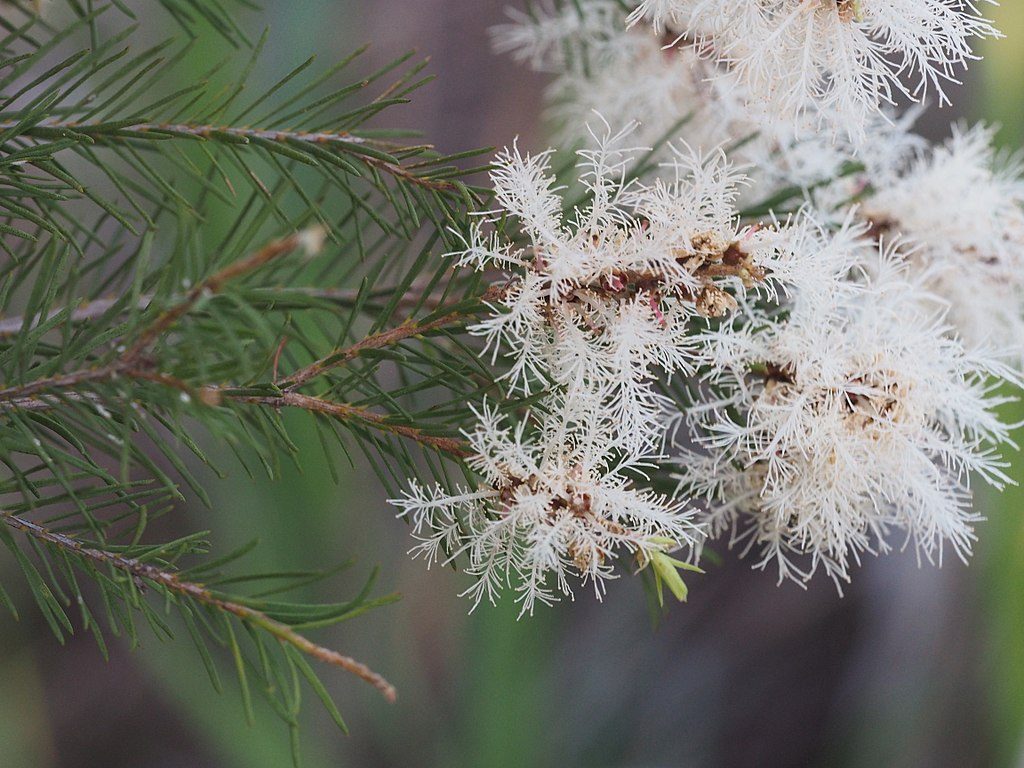- About Us
- Our Work
- Tree Info
- Get Involved
- Blog
- Support Us
By Canopy Team on August 26, 2019

Tree Spotlight Series: Follow along as we learn about the fascinating trees that live among us. This series is in partnership with Rhee Lab in the Plant Biology Department of the Carnegie Institution for Science.
Other posts in the series: ginkgo biloba, Douglas fir, giant sequoia, Chinese tallow, silver-dollar gum, Monterey pine, green dracaena, coast live oak, cork oak, Japanese maple, silver birch, dawn redwood, Japanese persimmon ‘Hachiya’, carob, California bay, avocado, southern magnolia, flowering dogwood, red ironbark eucalyptus, and blackwood acacia.
The Melaleuca alternifolia, part of the Myrtaceae family, is also known as the “tea tree”. The name derives from Captain James Cook’s visit to Australia in 1770, who brewed a few of the tree’s leaves to produce a tea. From then on, the name “tea tree” became commonplace.
While the oil is rarely ever used in tea in the present day, the commercialized oil is known as tea tree oil. The essential oil is derived from the leaves of the narrow leaved paperbark tree and is most commonly used for medical purposes. Even in ancient times, the tree was an important material source for Australian natives.
Since the tree originated in Australia, the narrow leaved paperbark tree has a long history with the Aboriginal people of Australia dating back 50,000 years. The tree, with its white bottle-brush-like flowers and peeling trunk, was sprinkled all throughout the country.
First, the bark is flexible and has a unique, soft texture and was a valuable material for a variety of uses. With these qualities, the bark was often used to wrap injuries, make sleeping mats, and wrap food to store for later.
Second, the leaves were a valuable medicinal source. Many Aboriginal people chewed the leaves for relieving headaches and other internal illnesses. When crushed with poultice, the leaves were also used for preventing fungal infections and healing cuts.
For thousands of years, the medicinal properties of the tree were hidden in Aboriginal culture. That was until an Australian chemist known as Arthur Penfold began to research the properties of the oil in the early 1920s. With this, a quick chain of subsequent research on tea tree oil led to its popularity as a common household remedy for various external ailments.
Popular in drugstores, beauty shops, and convenience stores, the narrow leaved paperbark tree makes its presence known with its potent tea tree oil. When extracted and distilled correctly, the oil from the tree’s leaves and twigs can be utilized for several medicinal purposes.
The main active compounds found in tea tree oil are terpinen-4-ol and gamma-terpinene, which belong to a large class of plant compounds called terpenoids. These two compounds are known to have antifungal, anti-inflammatory, and disinfectant properties. With that, many use tea tree oil to prevent fungal infections, help soothe inflamed skin, bug bites, and as an antiseptic. The oil is also commonly used to treat mild to moderate acne.
Through helping people treat external and internal ailments for thousands of years, the narrow leaved paperbark tree has made its dent in botanical history.
 Suhyun (Suzie) Lee is a 2019 summer intern at the Rhee Lab in the Plant Biology Department of the Carnegie Institution for Science. She is a first year student at Cal Poly University studying biology. Molecular biology has always piqued her interest and in the future, she hopes to pursue research regarding the defense mechanisms of organisms and phenotypic plasticity within plants or animals. In her free time she loves to paint, hike, and garden.
Suhyun (Suzie) Lee is a 2019 summer intern at the Rhee Lab in the Plant Biology Department of the Carnegie Institution for Science. She is a first year student at Cal Poly University studying biology. Molecular biology has always piqued her interest and in the future, she hopes to pursue research regarding the defense mechanisms of organisms and phenotypic plasticity within plants or animals. In her free time she loves to paint, hike, and garden.